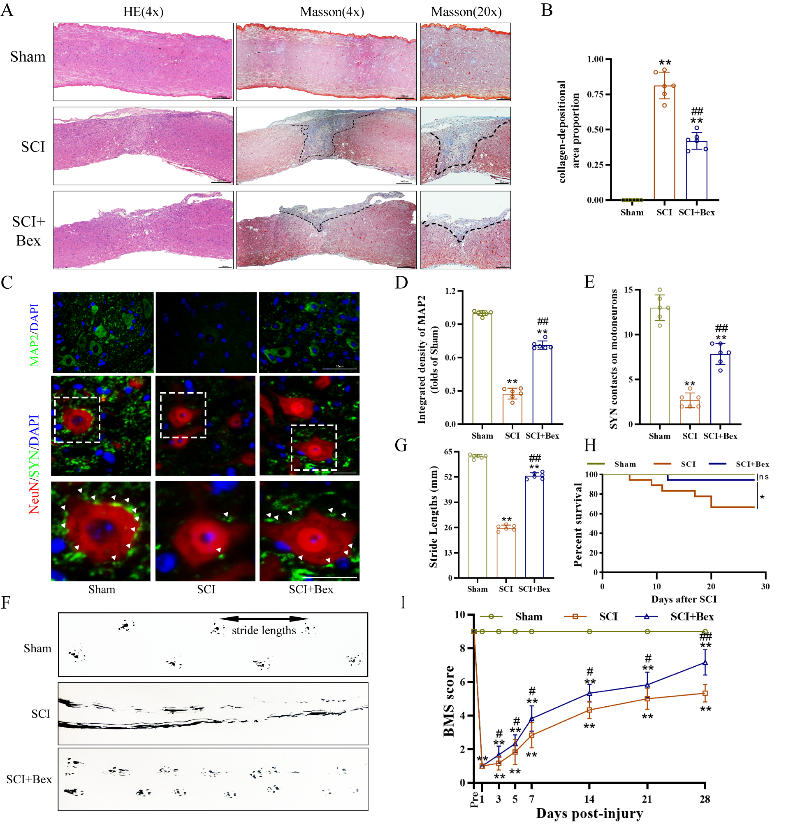中国神经再生研究(英文版) ›› 2023, Vol. 18 ›› Issue (12): 2733-2742.doi: 10.4103/1673-5374.373676
贝沙罗汀改善脊髓损伤后运动功能的机制
Bexarotene improves motor function after spinal cord injury in mice
Xingyu Wang1, 2, 3, Zhihao Shen1, 2, 3, Haojie Zhang1, 2, 3, Hao-Jie Zhang1, 2, 3, Feida Li1, 2, 3, Letian Yu4, Hua Chen1, 2, 3, Kailiang Zhou1, 2, 3, *, Hui Xu1, 2, 3, *, Sunren Sheng1, 2, 3, *
- 1Department of Orthopedics, The Second Affiliated Hospital and Yuying Children’s Hospital of Wenzhou Medical University, Wenzhou, Zhejiang Province, China; 2Zhejiang Provincial Key Laboratory of Orthopedics, Wenzhou, Zhejiang Province, China; 3The Second Clinical Medical College of Wenzhou Medical University, Wenzhou, Zhejiang Province, China; 4Renji College of Wenzhou Medical University, Wenzhou, Zhejiang Province, China
摘要:
贝沙罗汀已被证明能促进自噬,但其尚未应用于脊髓损伤的治疗中。为了解其对脊髓损伤的影响,实验建立了小鼠T11-T12脊髓挫伤模型,然后连续5d腹腔注射贝沙罗汀进行治疗。结果发现,贝沙罗汀可有效减少损伤脊髓中胶原沉积和病变神经元数量,增加神经细胞突触数量,减轻氧化应激,抑制细胞焦亡,促进运动功能的恢复,减少小鼠死亡。进一步研究发现,以3-甲基腺嘌呤抑制自噬可逆转贝沙罗汀对脊髓损伤的作用。同时贝沙罗汀还可增强促进脊髓损伤后转录因子E3的激活和核易位,并激活AMPK-SKP2-CARM1和AMPK-mTOR信号通路,而静脉注射TFE3 shRNA或腹腔注射AMPK抑制剂化合物C均可抑制贝沙罗汀的作用。提示贝沙罗汀可通过AMPK-SKP2-CARM1和AMPK-mTOR信号通路调节转录因子E3核易位,促进细胞自噬,以降低活性氧平,并抑制细胞焦亡,最终改善脊髓损伤后运动功能。
https://orcid.org/0000-0001-7795-576X (Kailiang Zhou); https://orcid.org/0000-0001-8277-7590 (Sunren Sheng); https://orcid.org/0000-0003-0540-4250 (Xingyu Wang); https://orcid.org/0009-0007-9455-5961 (Haojie Zhang); https://orcid.org/0000-0003-1395-3364 (Hao-Jie Zhang)
